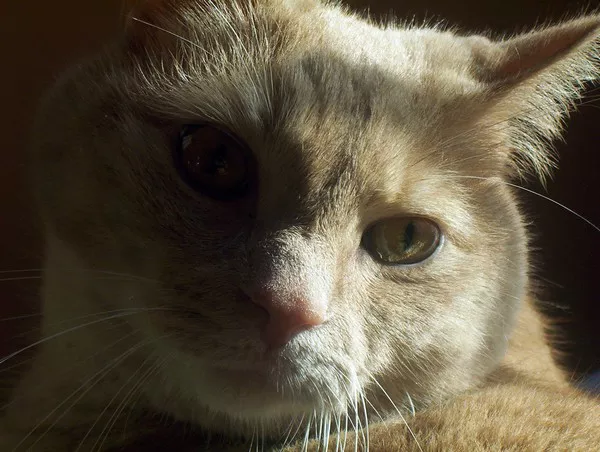Caring for a young kitten is a rewarding experience, but it comes with its own set of challenges, especially when it comes to ensuring proper nutrition. The first few weeks of a kitten’s life are critical for their growth, development, and overall health. At three weeks of age, kittens are still very young and rely heavily on their mother’s milk or formula to meet their nutritional needs. Proper feeding at this stage is essential to their survival and healthy development.
Feeding a 3-week-old kitten requires a deep understanding of their nutritional needs, the appropriate formula to use, and how to monitor their progress to ensure they’re growing as they should. Kitten formula is designed to mimic the nutritional content of a mother’s milk, providing essential proteins, fats, vitamins, and minerals that are crucial for a kitten’s development. This article will guide you on how to properly feed a 3-week-old kitten, the amount of formula they need, and how to transition them to solid food as they grow.
The Role of Kitten Formula
Proper nutrition is vital for a 3-week-old kitten as they are in the early stages of development, and their bodies are growing at a rapid rate. During this period, kittens require a balance of protein, fat, carbohydrates, vitamins, and minerals to support their immune system, help them gain weight, and develop strong bones and muscles.
In an ideal situation, a kitten would nurse from its mother, receiving all the necessary nutrients from her milk. However, not all kittens have access to their mother, or the mother may not have enough milk to meet the demands of her growing kittens. In such cases, kitten formula becomes a vital alternative. Kitten formula is specifically designed to provide the nutrition kittens need when they cannot nurse, and it helps support their immune system and healthy growth.
The role of kitten formula is to provide a complete, balanced diet during the first weeks of life. The formula closely resembles the composition of the mother’s milk but with the added benefit of being easy to digest and designed to be fed through a bottle, which is essential for feeding orphaned or bottle-fed kittens.
Feeding Frequency for a 3-Week-Old Kitten
A 3-week-old kitten is still in the very early stages of weaning and will require frequent feeding. At this age, kittens are still learning to nurse and typically do not consume enough calories to go long periods without a meal. Therefore, it is important to maintain a consistent feeding schedule to ensure that the kitten is receiving adequate nutrition and growing at a healthy rate.
Every 2-3 Hours:
At three weeks old, a kitten should be fed every 2-3 hours, even during the night. While some pet owners may wonder if it’s necessary to feed kittens overnight, it is crucial to continue feeding them regularly, especially in the early stages of their life. Kittens have small stomachs and a high metabolism, so they need to eat frequently to sustain their energy levels and support healthy growth.
If you are raising an orphaned kitten or bottle-feeding, it’s important to set a schedule and stick to it as closely as possible. A 3-week-old kitten may not yet be able to self-regulate its feeding times, so it’s the owner’s responsibility to ensure that the kitten receives the right amount of nutrition at the right intervals.
As the kitten grows, they may gradually be able to go longer between feedings. By four weeks of age, the kitten may be able to handle feedings every 4 hours during the day, though nighttime feedings should continue until around 6 weeks of age.
Consistency:
Consistency is key when feeding a 3-week-old kitten. Cats, in general, are creatures of habit, and maintaining a regular feeding schedule helps establish a routine that can benefit both you and your kitten. Not only does consistency help regulate the kitten’s appetite, but it also fosters trust and a sense of security. A regular feeding schedule can also prevent overfeeding or underfeeding, both of which can be harmful to a kitten’s development.
If you are using kitten formula, it’s important to prepare fresh formula each time, as it should not be reused. Additionally, if you find that your kitten is not finishing the formula within 30 minutes, discard the remaining formula to ensure it stays fresh and hygienic.
How Much Formula for a 3-Week-Old Kitten
Knowing the proper portion size for a 3-week-old kitten is essential for ensuring that they are getting enough nutrition without being overfed. Overfeeding or underfeeding a kitten can lead to serious health issues, so monitoring portion sizes is critical during this early stage of their life.
1/2 Tablespoon per Feeding:
For a 3-week-old kitten, the general recommendation is to start with about 1/2 tablespoon (approximately 7.5 ml) of kitten formula per feeding. This is typically a good starting point, but it’s important to adjust the portion size based on your kitten’s weight, appetite, and specific needs.
As the kitten grows, they may begin to consume more formula per feeding. A kitten’s stomach is small, so they will need smaller, more frequent meals during the first few weeks of life. As they approach 4 weeks of age, you can gradually increase the portion size by a few milliliters per feeding, depending on their needs.
Monitor Weight:
One of the most effective ways to ensure your kitten is getting the right amount of formula is to monitor their weight regularly. Weigh your kitten at least once a week to track their growth and adjust the amount of formula accordingly. A healthy kitten should gain weight consistently, about 10-15 grams (0.35-0.5 ounces) per day.
If your kitten is not gaining weight or seems lethargic or dehydrated, this could indicate that they are not getting enough nutrition. Conversely, if your kitten is consistently overfed, it may show signs of bloating, discomfort, or excessive weight gain. If you notice any of these issues, consult your veterinarian to adjust the feeding plan accordingly.
Transitioning to Solid Food
At around 3 to 4 weeks of age, kittens begin to show interest in solid food and can start transitioning from formula to a more varied diet. However, this transition should be gradual, as kittens are not yet fully weaned and still require the nutrients provided by kitten formula.
How to Transition to Solid Food:
When kittens begin to show signs of readiness for solid food, you can start introducing them to wet kitten food. This should be done gradually to ensure that the kitten’s digestive system can handle the change without becoming upset. At this stage, it’s best to mix kitten formula with wet food to create a soft, mushy consistency that is easy for the kitten to lap up.
Start with a mixture of about 75% formula and 25% wet kitten food. Over the next few days or weeks, gradually increase the amount of solid food in the mixture as the kitten becomes more comfortable with the texture and flavor.
By 6 weeks of age, most kittens should be able to eat solid food on their own and may start to reduce their reliance on formula. However, it’s important to continue offering kitten formula as a supplement until the kitten is fully weaned, typically by 8 weeks of age.
Mixing Formula and Solid Food:
To help the kitten adjust to eating solid food, mix the formula with the wet food in a shallow dish. You can also moisten the dry kitten food with formula to make it easier for the kitten to consume. Some kittens may be hesitant to try solid food, so it’s important to be patient and encourage them without forcing them to eat.
Signs of Proper Feeding
As a kitten grows, it’s important to track signs of proper feeding to ensure they are getting the nutrition they need for healthy development. Below are some signs that indicate your kitten is being properly fed.
Healthy Weight Gain:
Healthy weight gain is one of the most important signs that a kitten is being properly fed. Kittens should gain weight steadily, with a target of 10-15 grams (0.35-0.5 ounces) per day. Regularly monitor your kitten’s weight to ensure they are progressing at a healthy rate. A lack of weight gain could be a sign that the kitten is not getting enough formula.
Energy Levels:
A well-fed kitten should be energetic, curious, and alert. Kittens that are properly nourished tend to be playful and active. If your kitten seems lethargic or refuses to play, this may indicate a problem with their feeding or health.
Conclusion
Feeding a 3-week-old kitten requires careful attention to detail and a commitment to ensuring that the kitten receives the right amount of nutrition at the right times. By understanding the importance of proper kitten formula, adhering to a consistent feeding schedule, and monitoring portion sizes, you can help your kitten grow into a healthy and thriving adult cat. As they approach 4 weeks of age, be sure to begin the gradual transition to solid food, always keeping an eye on their weight, energy levels, and overall health. With the right care and attention, your kitten will thrive and continue to develop into a healthy, happy feline companion.
Related Topics

























